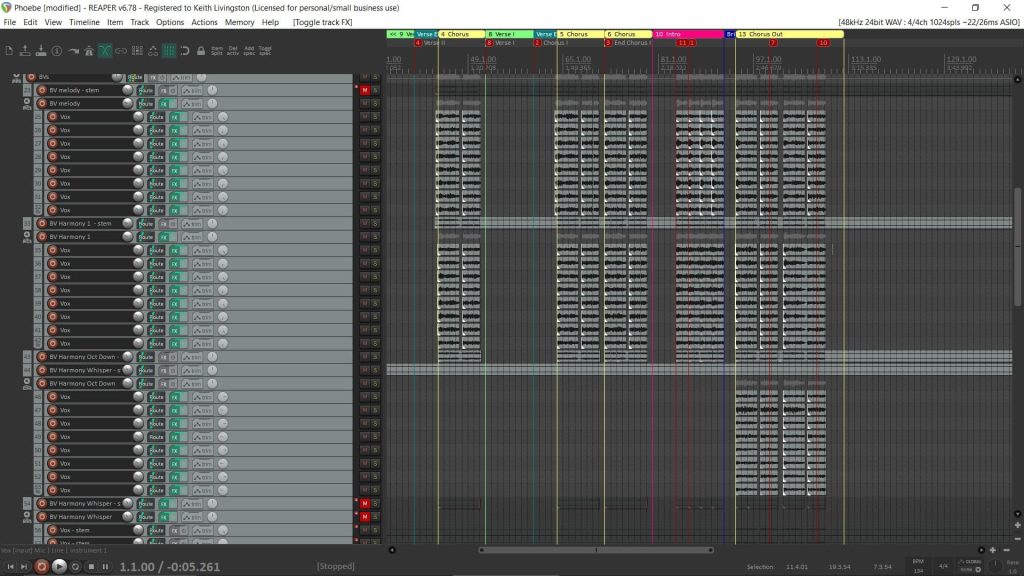Let's talk about how to get big sounding backup vocals, a la Mutt Lange/Def Leppard. It's pretty simple, but there's a neat little trick that adds excitement. Let's get to it. There's a wrtten explanation below the video.
Record Multiple Tracks
One thing that helps a lot is recording multiple tracks. Take your melody (if there is one) and record it 8 times or so. Pan the takes away from each other, whatever amount sounds good. They don't all have to be hard left and right.
Melody Vocals
Do the same for any harmony vocals. Multiple takes, and pan the takes.
Harmony Vocals
Consider adding parts an octave up from the melody, and/or an octave down from the melody. If you're feeling ambitious, you can add octaves to the harmonies, too.
Octave Down Vocals
Whisper Scream
Then add another set of takes of what we can call a whisper scream.
A whisper scream is the sound you make when you're imitating a stadium full of people cheering. It's not loud, like a scream, but it has the intensity of a scream. It also has no note. It's the airy part of talking. The vocal chords are not closed. Don't be afraid to add some distortion or saturation.
Whisper scream tracks can add a sense of excitement to your backing vocals.
Whisper/Scream Vocals
And here's everything together.
All Vocals
It would help to have multiple singers and use different mics for different takes, as the differences in the sound tend to make this technique richer. In my case however, I didn't have multiple singers waiting at my beck-and call. And in fact, my vocal mic was not even working. So I used a USB mic to do all the vocals.
That's OK. The idea of these background vocals is not a pristine sound, but a rowdy, almost group shout.
So here's how you do the Mutt Lange Background Vocal Technique
See you soon!
Keith

